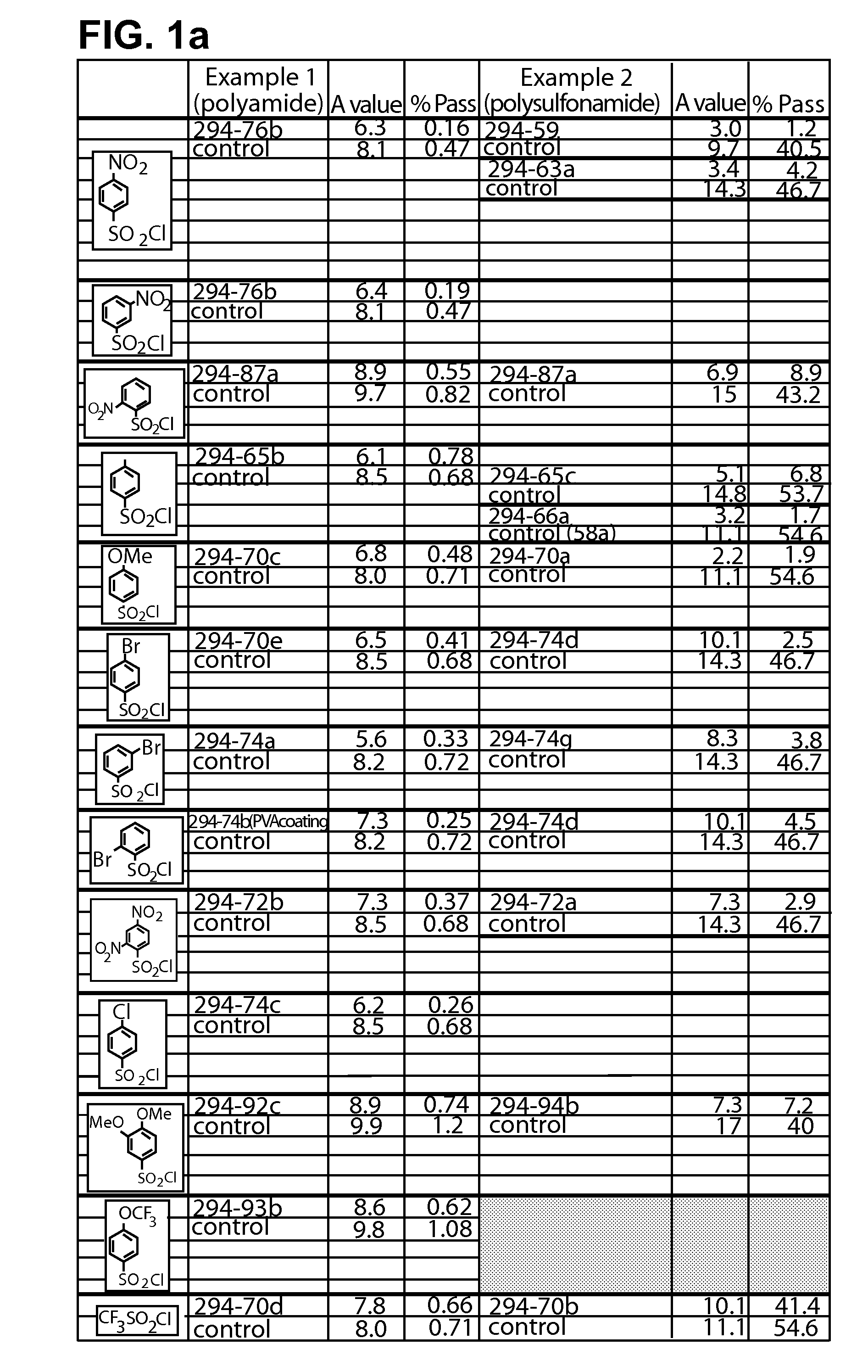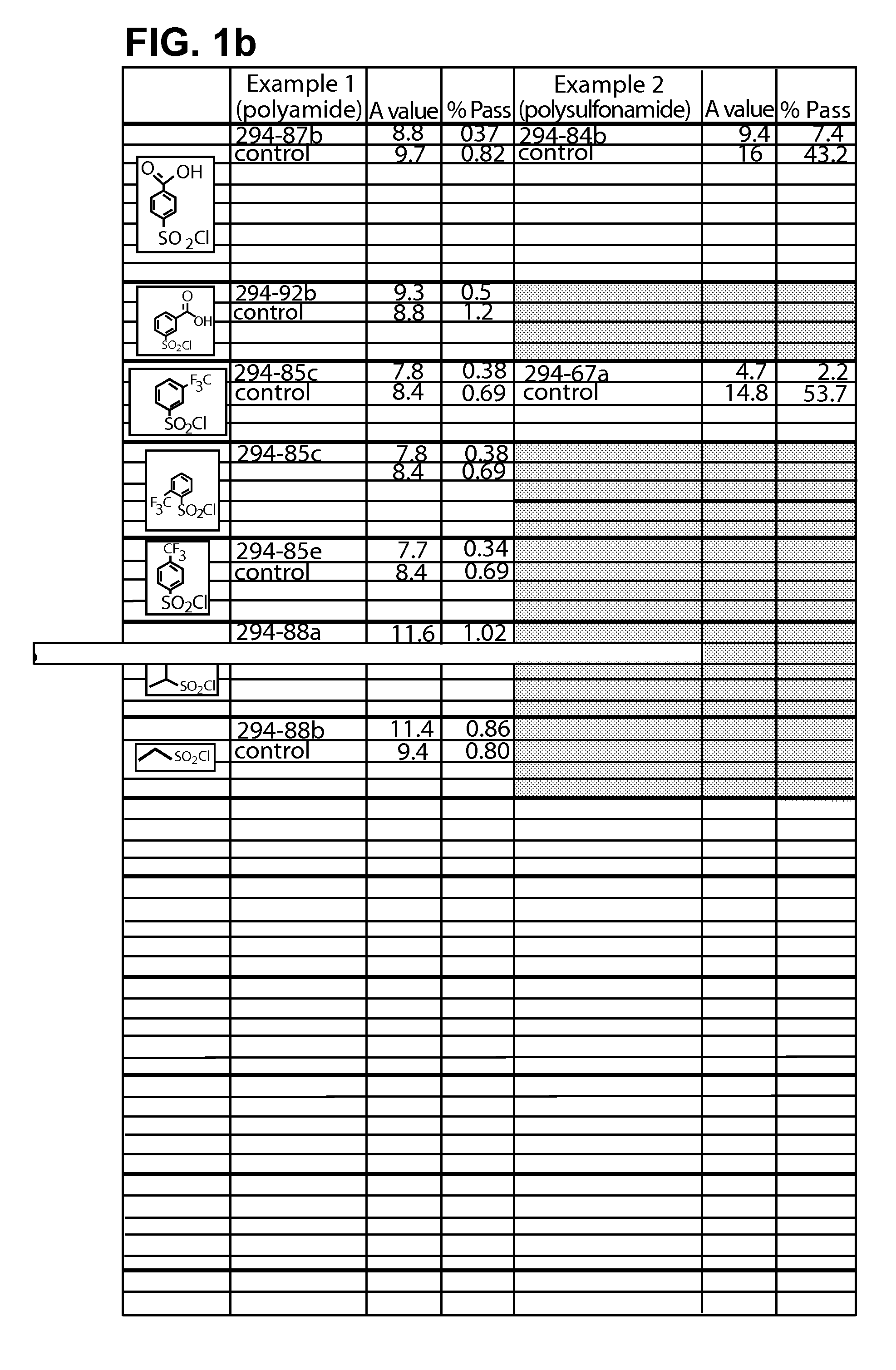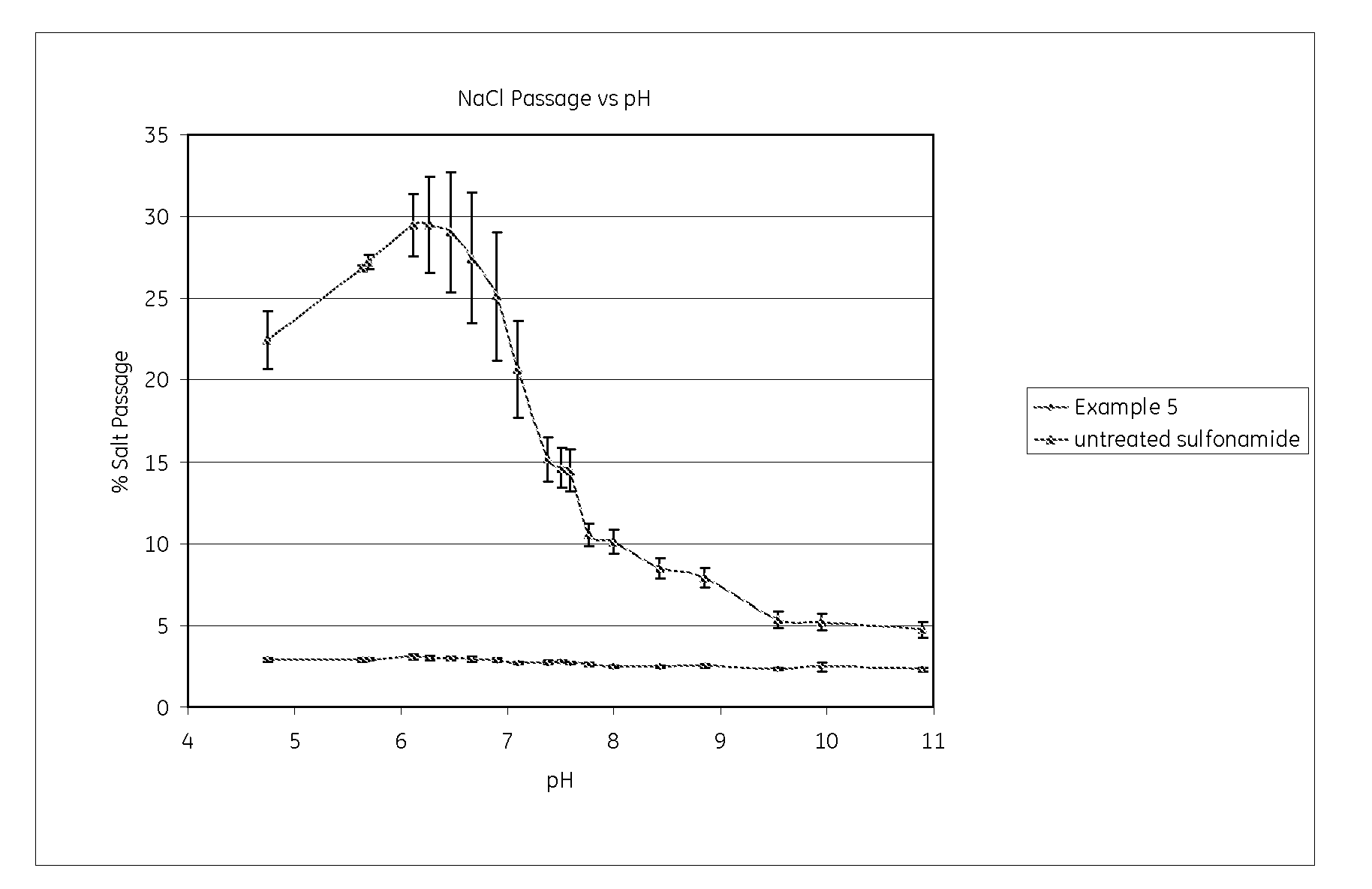Polyamide matrices and methods for their preparation and use
- Summary
- Abstract
- Description
- Claims
- Application Information
AI Technical Summary
Benefits of technology
Problems solved by technology
Method used
Image
Examples
example 1
Representative post-treatment procedure for polyamide membrane
[0088]Dry flat-sheet composite polyamide reverse osmosis membrane (FT30 from FilmTec) was clipped between two 8″×11″ plastic frames. Deionized DI water was poured onto the face at a depth of a ¼″ and allowed to soak for 20 minutes. A 1% (w / w) solution of the aryl sulfonyl chloride (see FIG. 1) was freshly made in MeOH with 0.2% (w / w) triethyl amine. The water was removed from the face of the membrane by simply draining for a few seconds. The MeOH solution containing the aryl sulfonyl chloride was poured on the face of the membrane to a depth of ⅛″ and allowed to be in contact with the membrane for 2 minutes. The methanol solution was poured off and then the membrane face and back side were rinsed with excess water. The membrane was kept wet until testing.
example 2
Representative Post-Treatment Procedure for Polysulfonamide Membrane
[0089]A hand frame of the base polysulfonamide membrane was made as follows. A commercially available PES diary UF membrane was clipped between two 8″×1″ plastic frames and the membrane face with rinsed with excess water to remove residual chemicals. The water was drained off. A 2% (w / w) piperazine aqueous solution also containing 2% TEA and 4% camphor sulfonic acid and 0.1% (w / w) 4-(N,N-dimethylamino)-pyridine was added to the face side of the frame so that the depth of solution was ⅛″. It was allowed to stay in contact for 1 minute. The aqueous amine solution was poured off and allowed to drain for a few seconds. Excess droplets of the amine solution were metered off the surface of the membrane by running the membrane face under an air knife. The amine laden membrane was immediately laid flat and 200 mL of 0.16% (w / w) 1,3,6-naphthalene trisulfonyl chloride in 20:80 mesitylene:Isopar G solution which had been prehe...
example 3
[0091]A commercial flat-sheet composite polyamide reverse osmosis membrane (FT30 from FilmTec) was post-treated as Example 1 with the exception that 3% (w / w) p-nitro-benzenesulfonyl chloride was used in the MeOH solution. The membrane was then tested under standard brackish NaCl aqueous solutions and high salinity 3.5% NaCl simulated seawater solution. (Table 2) After testing on 0.20%, 3.5%, and 0.20% NaCl aqueous solutions sequentially the membrane and its untreated control were chlorinated while running in the test cells with 70 ppm NaOCl at pH 8.5, 77° F. for 30 minutes. The NaOCl was removed and the treated membrane and its untreated control were tested on 0.20% and 3.5% NaCl sequentially again (Table 2). Pressures and temperatures are given and the units of permeability and salt transmission are as Table 1.
TABLE 2NaClNaClexperimentconcentrationPassageTemperaturePressureorder(%)A value(%)(deg C.)(PSIG)Post-treatment according to Example 310.250.272522723.52.50.252480430.23.60.22...
PUM
| Property | Measurement | Unit |
|---|---|---|
| Temperature | aaaaa | aaaaa |
| Fraction | aaaaa | aaaaa |
| Fraction | aaaaa | aaaaa |
Abstract
Description
Claims
Application Information
 Login to View More
Login to View More - R&D
- Intellectual Property
- Life Sciences
- Materials
- Tech Scout
- Unparalleled Data Quality
- Higher Quality Content
- 60% Fewer Hallucinations
Browse by: Latest US Patents, China's latest patents, Technical Efficacy Thesaurus, Application Domain, Technology Topic, Popular Technical Reports.
© 2025 PatSnap. All rights reserved.Legal|Privacy policy|Modern Slavery Act Transparency Statement|Sitemap|About US| Contact US: help@patsnap.com



